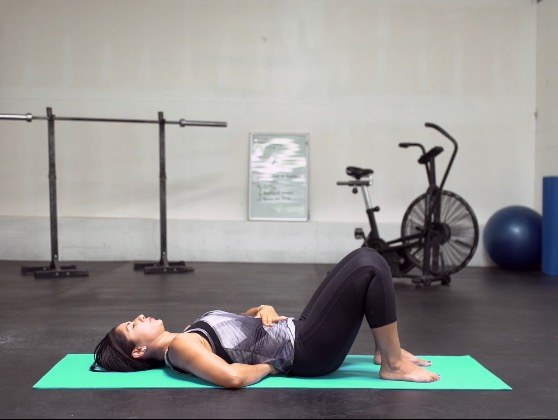Do you ever stop to think about how efficient your breathing is?
I’ll place my bets on “probably not”.
Yet breath is the subject of many scientific studies and research, including the basis of the The Postural Restoration Institute (PRI)’s work. I’m not in any way affiliated with PRI but I remember they exploded into the fitness and strength coaching scene a few years ago with what seemed like mind-boggling magic.
As a Pilates instructor, I loved how breathing mechanics was suddenly the “cool kid” on the block, and it also made me respect Joseph Pilates (the founder of the Pilates method) even more because the man pioneered a lot of breathing techniques before the research was even around. He not only explored breath’s impact on physical preparation and movement his entire life, but he made breathing the primary pillar of the Pilates method.
Good proper breathing techniques gives us more power, stability and control when we lift heavy weights, and why it’s the first principle of my digital course, Pilates FloWOD.
Click here to learn more about Pilates FloWOD
What’s breath got to do with it?
Dysfunctional breathing patterns has made a mess out of our bodies, and we probably only use about 30% of our actual breathing capacity.
Lame.
That’s because breathing is so automatic that we rarely think about it. Yet, it’s important to note all the big [muscle] players involved in functional breathing: The diaphragm, transversus abdominis (TA), multifidus, obliques and pelvic floor all play a critical role in our breathing. (I left out “lungs” because, well, duh.)
Dysfunctional breathing then creates a lot of inefficiencies in our movement patterns and triggers other surrounding muscles (think the chest, shoulders and neck) to fill in for the A-players. Basically we’re sending in the wrong guys for the job, which is how we end up with neck and shoulder problems, SI joint and low back issues, and hip pain, just to name a few.
PRI popularized breathing enough that many strength coaches now integrate a lot of breathing drills into clients’ programming, which is cool. Except “drills” to me is the equivalent of doing chores and I have a lot of clients who’d rather skip it and get to the exercise part.
The 3D Breathe
In Pilates, we talk about breathing as 3D or 360-degree, meaning that we fill all side of the torso with our inhalation.
Here’s how to practice this:
- Lie down on your back with legs bent and feet planted on the floor
- Place one hand on your chest and another under your belly button
- Count for 8 seconds while you breath in, taking air into your low belly first
- The hand at your stomach should rise before the hand at your chest
- Then, exhale for a count of 8 seconds, allowing the hand at your stomach to come down before the hand at your chest
- Repeat this exercise for a count of 9 seconds, 10 seconds, 11 seconds….until you reach 12 seconds
Obviously no one is out breathing this long and deep all the time, but if you can get into the practice of doing this, that 3D breathing style becomes more and more automatic.
Want to learn more? Download the free Meathead Pilates Body guide!



Comments 1
Pingback: Exercises to Find Neutral Spine and Improve Back Mobility - Barbell Pilates with Trish DaCosta